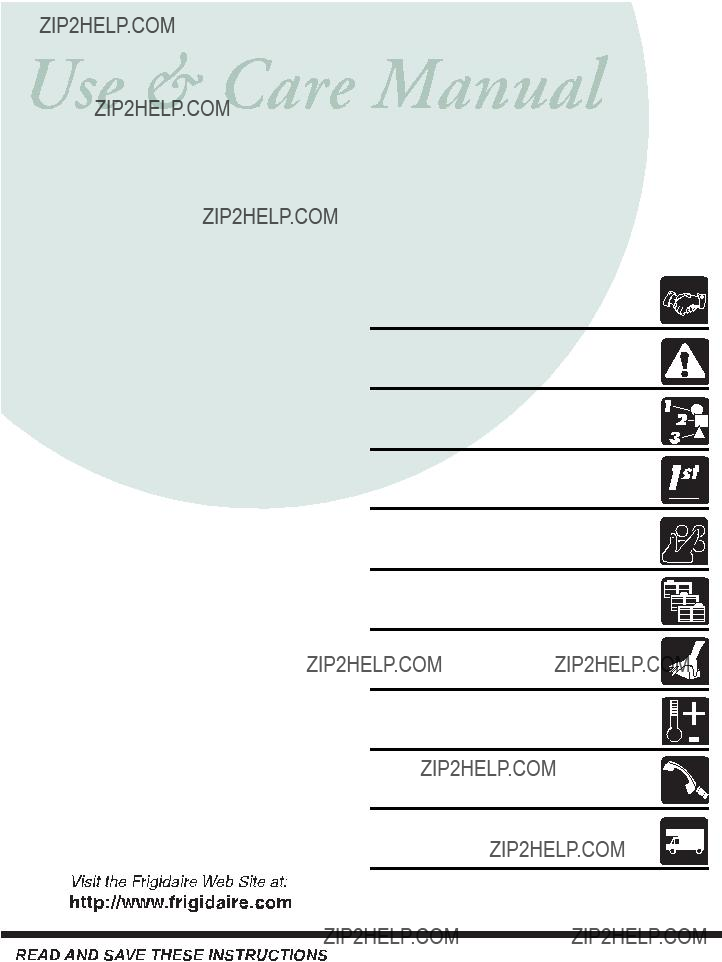
Electric
Wall Oven
Single and Double
Important Safety Instructions ...
318205116 (0703) Rev. A

Electric
Wall Oven
Single and Double
Important Safety Instructions ...
318205116 (0703) Rev. A
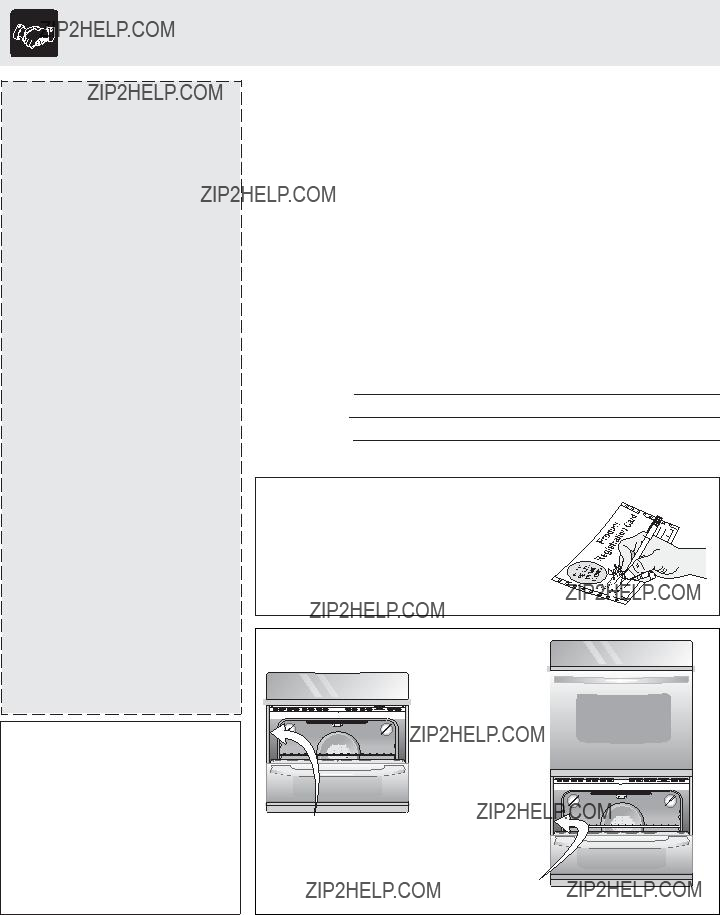
Welcome & Congratulations
Questions?
(United States)
(Canada)
Please attach sales receipt here for future reference.
Congratulations on your purchase of a new appliance! At Electrolux Home Products, we are very proud of our product and are completely committed to providing you with the best service possible.Your satisfaction is our number one priority.
We know you???ll enjoy your new appliance and ThankYou for choosing our product. We hope you consider us for future purchases.
PLEASE CAREFULLY READ AND SAVE THESE INSTRUCTIONS
This Use & Care Manual contains general operating instructions for your appliance and feature information for several models. Your product may not have all the described features. The graphics shown are representative.The graphics on your appliance may not look exactly like those shown. These instructions are not meant to cover every possible condition and situation that may occur. Common sense and caution must be practiced when installing, operating and maintaining any appliance.
Please record your model and serial numbers below for future reference.
Model Number:
Serial Number:
Purchase Date:
Versi??n en espa??ol
Si desea obtener una copia en espa??ol de este Manual del Usuario, s??rvase escribir a la direcci??n que se incluye a continuaci??n. Solicite la P/N 318205116E.
Spanish Use & Care Manual
Electrolux Home Products
P. O. Box 212378
Augusta, GA 30917
??2007 Electrolux Canada Corp. All rights reserved
Product Registration
Register Your Product
The PRODUCT REGISTRATION CARD should be filled in completely, signed and returned to Electrolux Home Products.

Important Safety Instructions
Read all instructions before using this appliance.
Save these instructions for future reference.
This manual contains important safety symbols and instructions. Please pay attention to these symbols and follow all instructions given.




 This symbol will help alert you to situations that may cause serious bodily harm, death or property damage.
This symbol will help alert you to situations that may cause serious bodily harm, death or property damage.
 This symbol will help alert you to situations that may cause bodily injury or property damage.
This symbol will help alert you to situations that may cause bodily injury or property damage.
??? Remove all tape and packaging wrap before using the appliance. Destroy the carton and plastic bags after unpacking the appliance. Never allow children to play with packaging material. Do not remove the wiring label and other literature attached to the back of the wall oven. Do not remove model/serial number plate.
??? Proper
Install only per installation instructions provided in the literature package for this appliance.
Ask your dealer to recommend a qualified technician and an authorized repair service. Know how to disconnect the electrical power to the appliance at the circuit breaker or fuse box in case of an emergency.
 Electronic controllers can be damaged by cold temperatures. When you use your appliance for the first time, or if it has not been used for a long period of time, make sure that it has been exposed to a temperature above 0??C/32??F for at least 3 hours before connecting it to the power supply.
Electronic controllers can be damaged by cold temperatures. When you use your appliance for the first time, or if it has not been used for a long period of time, make sure that it has been exposed to a temperature above 0??C/32??F for at least 3 hours before connecting it to the power supply.
??? User
??? All wall ovens can tip.
??? Injury to persons could result.
??? Install
??? See Installation Instructions.
To reduce the risk of tipping, the wall oven must be secured by properly installed
3
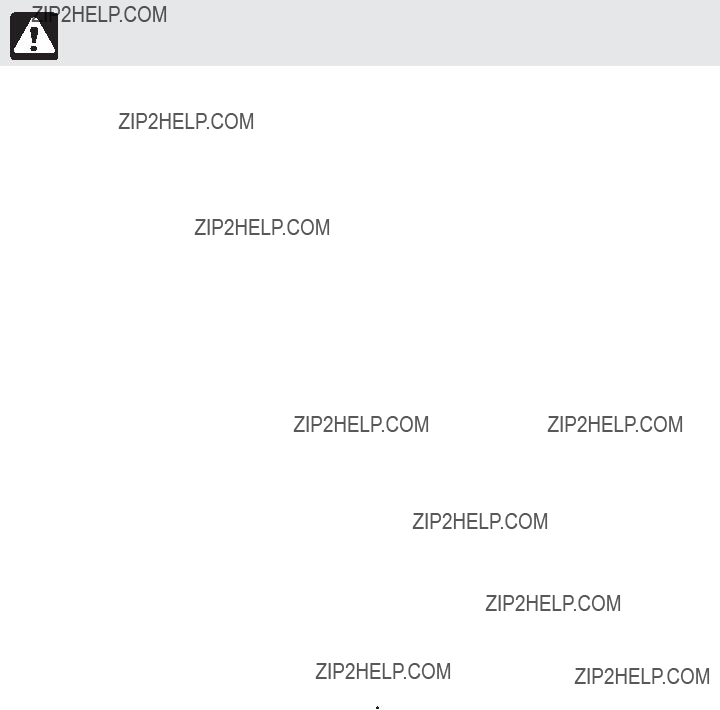
Important Safety Instructions
???Do Not Use Water or Flour on Grease
???When heating fat or grease, watch it closely. Fat or grease may catch fire if allowed to become too hot.
???Use Only Dry Pot
???Do Not Heat Unopened Food
IMPORTANT INSTRUCTIONS FOR USING
YOUR OVEN
???Use Care When Opening an Oven
???Keep Oven Vent Ducts Unobstructed. The wall oven is vented at the center trim depending of the model. Touching the surfaces in this area when the wall oven is operating may cause severe burns. Also, do not place plastic or heat- sensitive items near the oven vent. These items could melt or ignite.
???Placement of Oven Racks. Always place oven racks in desired location while oven is cool. Remove all utensils from the rack before removing rack. If rack must be moved while oven is hot, use extreme caution. Use pot holders and grasp the rack with both hands to reposition. Do not let pot holders contact the hot oven element or interior of the oven.
???Do not use a broiler pan without its insert. Broiler pan and grid allow dripping fat to drain and be kept away from the high heat of the broiler.
???Do not cover the broiler grid or oven bottom with aluminum foil. Exposed fat and grease could ignite.
???Do not touch a hot oven light bulb with a damp cloth.
Doing so could cause the bulb to break. Disconnect the appliance or shut off the power to the appliance before removing and replacing the bulb.
???Protective
IMPORTANT INSTRUCTIONS FOR CLEANING
YOUR OVEN
???Clean the appliance regularly to keep all parts free of grease that could catch fire. Exhaust fan ventilation hoods and grease filters should be kept clean. Do not allow grease to accumulate. Greasy deposits in the fan could catch fire. Refer to the hood manufacturer's instructions for cleaning.
???
???Clean in the
???Do not clean the oven door gasket. The door gasket is essential for a good seal. Care should be taken not to rub, damage or move the gasket.
???Do not use oven cleaners. No oven cleaner or oven liner protective coating of any kind should be used in or around any part of the appliance
 The health of some birds is extremely sensitive to the fumes given off during the
The health of some birds is extremely sensitive to the fumes given off during the
SAVE THESE INSTRUCTIONS
4

Features At A Glance
Your Electric
Wall Oven
Features
At A Glance
Electronic Oven Controls with Clock and Kitchen Timer (Features will vary according to model)
Dual or Single Interior Oven
Lights depending on your model
Manual or
Oven
Broil Vent
Element
Upper Oven
Vent
Dual or Single Interior
Oven Lights dependingSingle Wall Oven on your model

 depending on your model
depending on your model
 Adjustable Oven Racks
Adjustable Oven Racks
 Large 1 Piece Door Handle
Large 1 Piece Door Handle
 Glass Front Oven
Glass Front Oven
Door with Large
Window Opening
Manual or
Double Wall Oven
Features will vary according to model
5

Before Setting Oven Controls
Single and Upper Oven
Vent Location
Lower Oven
Vent Location
 Some models are equipped with a blower which runs in baking and
Some models are equipped with a blower which runs in baking and
Oven Vent Location
The ovens are vented at the center trim. When the oven is on, warm air is released through the vent. This venting is necessary for proper air circulation in the oven and good baking results.
Arranging Oven Racks
ALWAYS ARRANGE OVEN RACKS WHEN THE OVEN IS COOL (PRIOR TO OPERATING THE OVEN). Always use oven mitts when using the oven.
To remove an oven rack, pull the rack forward until it stops. Lift up front of rack and slide out.
To replace an oven rack, fit the rack onto the guides on the oven walls. Tilt the front of the rack upward and slide the rack back into place.
Air Circulation in the Oven
If using 1 rack, place in center of oven. If using multiple racks, stagger cookware as shown.
For best air circulation and baking results allow
1 Oven Rack
Multiple Oven Racks
Setting Oven Controls
Refer to the Electronic Oven Control Guide for oven settings.
6
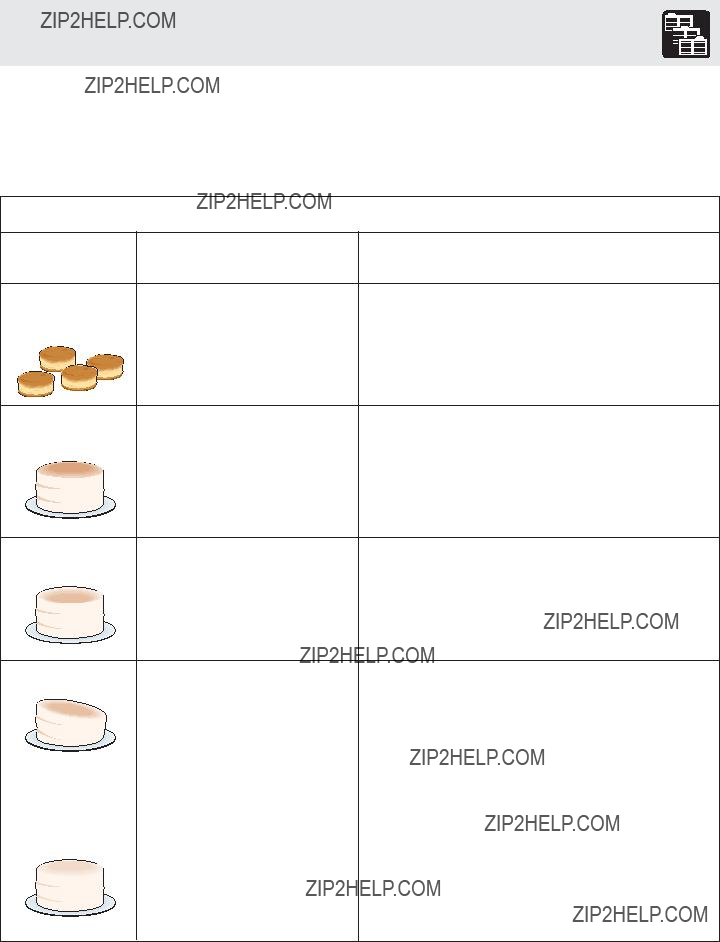
Cooking Informations
Oven Baking
For best cooking results, heat the oven before baking cookies, breads, cakes, pies or pastries, etc... There is no need to preheat the oven for roasting meat or baking casseroles.
The cooking times and temperatures needed to bake a product may vary slightly from your previously owned appliance.
Baking Problems and Solutions Chart
7

Cooking Informations
Broiling
Broiling is a method of cooking tender cuts of meat by direct heat under the broil element of the oven.
Preheating
Preheating is suggested when searing rare steaks. (Remove all ustensils before preheating. Foods will stick if placed on hot metal.) To preheat, set the control(s) to BROIL as instructed in the Owner's Guide. Wait for the element to become
2 minutes. Preheating is not necessary when broiling meats
Broil Stop Position
To Broil
Broil on side until the food is browned; turn and cook on the second side. Season and serve. Always pull rack out to the "stop" position before turning or removing food.
Determine Broiling Times
Broiling times vary, so watch the food closely. Time not only depends on the distance from element, but on the thickness and aging of meat, fat content and doneness preferred. The first side usually requires a few minutes longer than second. Frozen meats also require additional time.
Broiling Tips
Broiler pan and its grid allow dripping grease to drain and be kept away from the high heat of the broiler.
DO NOT use a pan without its grid. DO NOT cover the grid with foil. The exposed grease could ignite.
 Should an oven fire occur, close the oven door and turn off the oven. If the fire continues, throw baking soda on the fire or use fire extinguisher. DO NOT put water or flour on the fire. Flour may be explosive.
Should an oven fire occur, close the oven door and turn off the oven. If the fire continues, throw baking soda on the fire or use fire extinguisher. DO NOT put water or flour on the fire. Flour may be explosive.
Grid (some models)
Broiler Pan (some models)
Broiler
To make cleaning easier, line the bottom of the broiler pan with aluminum foil. DO NOT cover the broiler grid with foil.
To prevent grease from baking on, remove the broiler pan from the oven as soon as cooking is completed. Use hot pads because the broiler pan is extremely hot. Pour off grease. Soak the pan in HOT, soapy water.
Clean the broiler pan as soon as possible after each use. If necessary, use
8

Cooking Informations
Convection Cooking (some models)
The convection oven uses a fan located in the rear wall of the oven to circulate heated air around the food to be cooked. The controlled air flow pattern quickly seals the food surface retaining the natural juices and flavour. This method of cooking enables you to obtain the best culinary results when baking, thawing, dehydrating and roasting foods.
Convection notes:
1.Batch cooking is more convenient with better results.
2.Defrosting is quicker in convection mode when compared to regular radiant cooking.
3.Remember to use tested recipes with times adjusted for convection baking/roasting when using the convection mode. Times may be reduced by as much as 30% when using the convection feature.
Convection Roasting (some models)
When convection roasting, use the broiler pan and grid, and the roasting rack. The broiler pan will catch grease spills and the grid will help prevent spatters. The roasting rack will hold the meat.
 To prevent food from contacting the broil element and to prevent grease spattering, DO NOT use the roasting rack when broiling.
To prevent food from contacting the broil element and to prevent grease spattering, DO NOT use the roasting rack when broiling.
1.Place oven rack on
2.Place the grid in the broiler pan. The roasting rack fits on the grid allowing the heated air circulate under the food for even cooking and helps to increase browning on the underside. Make sure the roasting rack is securely seated on the grid in the broiler pan. DO NOT use the broiler pan without the grid or cover the grid with aluminum foil.
3.Position food (fat side up) on the roasting rack.
4.Place the broiler pan on the oven rack. Note: Always pull rack out to the stop position before removing food.
NOTE: For best convection roasting result, always use the broiler pan, grid and roasting rack.
Roasting Rack (some models)
Broiler Pan Grid (some models)
Broiler Pan (some models)
9

Painted and Plastic Parts,
Body Parts, and Decorative
Trim
For general cleaning, use hot, soapy water and a cloth. For more difficult soils and built- up grease, apply a liquid detergent directly onto the soil. Leave on soil for 30 to 60 minutes. Rinse with a damp cloth and dry. DO NOT use abrasive cleaners on any of these materials; they can scratch.
Stainless Steel, Chrome,
Control Panel, Decorative
Trim
Before cleaning the control panel, turn all controls to OFF. Clean using hot, soapy water and a dishcloth. Rinse with a clean water using a dishcloth. Be sure to squeeze excess water from the cloth before wiping the panel.
Clean stainless steel with hot, soapy water and a dishcloth. Rinse with clean water and a cloth. Do not use cleaners with high concentrations of chlorides or chlorines. Do not use harsh scrubbing cleaners. Only use kitchen cleaners that are especially made for cleaning stainless steel. Always be sure to rinse the cleaners from the surface as bluish stains may occur during heating that cannot be removed.
Porcelain Enamel Broiler Pan and Insert (some models), Door Liner, Body Parts
Gentle scouring with a soapy scouring pad will remove most spots. Rinse with a 1:1 solution of clear water and ammonia. If necessary, cover difficult spots with an
If the racks are cleaned in the
Oven Door
 DO Hand
DO Hand
Clean Frame
DOHand
Clean Door 
DO NOT
HandClean
Oven Door
Gasket
Use soap & water to thoroughly clean the top, sides and front of the oven door. Rinse well. You may use a glass cleaner on the outside glass of the oven door. DO NOT immerse the door in water. DO NOT spray or allow water or the glass cleaner to enter the door vents. DO NOT use oven cleaners, cleaning powders or any harsh abrasive cleaning materials on the outside of the oven door.
DO NOT clean the oven door gasket. The oven door gasket is made of a woven material, on
10

Care & Cleaning
A
Adhere to the following cleaning precautions:
???Allow the oven to cool before cleaning.
???Wear rubber gloves when cleaning any exterior parts of the oven manually.
???DO NOT clean the oven door gasket. The woven material of the oven door gasket is essential for a good seal. Care should be taken not to rub, damage or remove the gasket.
???DO NOT use any cleaning materials on the oven door gasket. Doing so could cause damage.
???Remove all utensils and any aluminum foil. These items cannot withstand high cleaning temperatures.
???Oven racks do not have to be removed, if they are not removed during the
???Remove any excessive spillovers in the oven cavity before starting the
???Clean any soil from the oven frame, the door liner outside the oven door gasket and the small area at the front center of the oven bottom. These areas heat sufficiently to burn soil on. Clean with soap and water.
NOTE: Prior to setting the

 The health of some birds is extremely sensitive to the fumes given off during the
The health of some birds is extremely sensitive to the fumes given off during the
 DO NOT line the oven walls, racks, bottom or any other part of the appliance with aluminum foil. Doing so will destroy heat distribution, produce poorbakingresultsandcausepermanent damage to the interior (aluminum foil will melt to the interior surface of the oven).
DO NOT line the oven walls, racks, bottom or any other part of the appliance with aluminum foil. Doing so will destroy heat distribution, produce poorbakingresultsandcausepermanent damage to the interior (aluminum foil will melt to the interior surface of the oven).
 DO NOT force the oven door open. This can damage the automatic door locking system. Use caution when opening the door after the
DO NOT force the oven door open. This can damage the automatic door locking system. Use caution when opening the door after the
Some models have an exposed Bake element in the lower oven cavity. On these models the bake element is designed to be tilted up using your hand from the front of the bake element. This will allow easier access to the oven bottom for cleaning. Be careful not to raise the element more than 4 or 5 inches from the resting position.
 The oven bake and broil elements may appear to have cooled after they have been turned OFF. The elements may still be hot and burns may occur if these elements are touched before they have cooled sufficiently.
The oven bake and broil elements may appear to have cooled after they have been turned OFF. The elements may still be hot and burns may occur if these elements are touched before they have cooled sufficiently.
What to Expect during Cleaning:
While the oven is in operation, the oven heats to temperatures much higher than those
DOHand
CleanDoor
DO Hand
Clean Frame
DO NOT Hand Clean
Oven Door Gasket
used in normal cooking. Sounds of metal expansion and contraction are normal. Odor is also normal as the food soil is being removed. Smoke may appear through the oven vent.
If heavy spillovers are not wiped up before cleaning, they may flame and cause more smoke and odor than usual. This is normal and safe and should not cause alarm. If available, use an exhaust fan during the
Note: See additional cleaning information for the oven door in the
General Care & Cleaning section.
To Set the
Refer to the Oven Control Guide for
11

Care & Cleaning
Cleaning the Manual Clean Oven (Regular oven models only)
Porcelain has a smooth finish and is a type of glass fused to metal. Oven cleaners can be used on all interior oven surfaces.
REMOVE SPILLOVERS AND HEAVY SOILING AS SOON AS POSSIBLE.
REGULAR CLEANINGS WILL REDUCE THE NUMBER OF MAJOR CLEANINGS LATER.
Adhere to the following cleaning precautions:
???Allow the oven to cool before cleaning.
???Wear rubber gloves when cleaning the appliance manually.
General Cleaning
Remove soils using hot, soapy water. Do not allow food spills with a high sugar or acid content (such as milk, tomatoes, saukerkraut, fruit juices or pie filling) to remain on the surface as they may cause a dull spot even after cleaning.
To Remove Heavy Soil
1.Allow a dish of ammonia to sit in the oven overnight or for several hours with the oven door closed. Clean softened spots using hot, soapy water. Rinse well with water and a clean cloth.
2.If soil remains, use a
Adhere to the following precautions when using oven cleaners:
1.DO NOT spray on the electrical controls or switches because it could cause a short circuit and result in sparking or fire.
2.DO NOT allow a film from the cleaner to build up on the temperature sensing bulb; it could cause the oven to heat improperly. (The bulb is located in the rear of the oven.) Carefully wipe the bulb clean after each oven cleaning, being careful not to move the bulb. A change in its position could affect how the oven bakes. Avoid bending the bulb and capillary tube.
3.DO NOT spray any cleaner on the oven door trim or gasket, handles or any exterior surfaces of the appliance, wood or painted surfaces. The cleaner can damage these surfaces.
To Clean the Oven Bottom
Clean using hot, soapy water, a mild abrasive cleanser, a
 Ammonia must be rinsed before operating the oven. Provide adequate ventilation.
Ammonia must be rinsed before operating the oven. Provide adequate ventilation.
 DO NOT line the oven walls, bottom, racks or any other part of the appliance with aluminum foil. Doing so will destroy heat distribution, produce poor baking results and cause permanent damage to the oven interior (aluminum foil will melt to the interior surface of the oven).
DO NOT line the oven walls, bottom, racks or any other part of the appliance with aluminum foil. Doing so will destroy heat distribution, produce poor baking results and cause permanent damage to the oven interior (aluminum foil will melt to the interior surface of the oven).
Care and Cleaning of Stainless Steel (some models)
Some models are equipped with stainless steel exterior parts. Special care and cleaning are required for maintaining the appearance of stainless steel parts. Please refer to chart provided at beginning of the Care & Cleaning section in this Use & Care Manual.
12
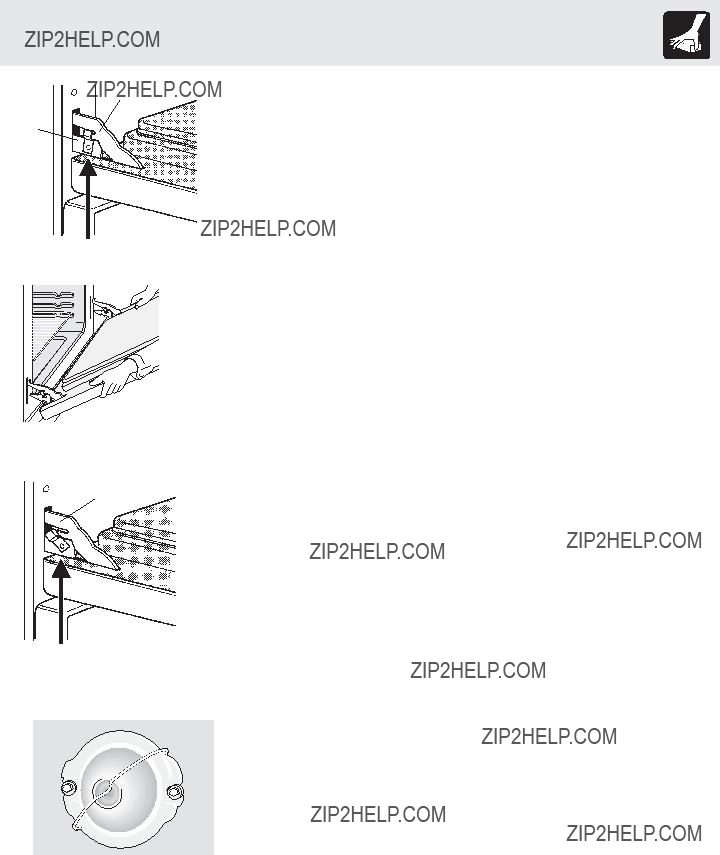
Hinge lever hook
Hinge support
Lock engaged for door removal Figure 1
HINGE SLOT - Door removed from the oven
Figure 2
Hinge lever
Lock in normal position
Figure 3
Care & Cleaning
Removing and Replacing the Oven Door
 The door is heavy. For safe, temporary storage, lay the door flat with the inside of the door facing down.
The door is heavy. For safe, temporary storage, lay the door flat with the inside of the door facing down.
To Remove Oven Door:
1.Open the door to the fully opened position.
2.Pull up the lock located on both hinge supports and engage it in the hinge lever hooks (Figure 1).You may have to apply a little downward pressure on the door to pull the locks fully over the hinge lever hooks.
3.Grab the door by the sides and pull the bottom of the door up and toward you to disengage the hinge supports. Keep pulling the bottom of the door toward you while rotating the top of the door toward the appliance to completely disengage the hinge levers (Figure 2).
4.To clean oven door, follow the instructions provided in the General Care & Cleaning table.
To Replace Oven Door:
1.Grab the door by the sides; place the hinge supports in the hinge slots. Open the door to the fully opened position.
2.Disengage the lock from the hinge lever hooks on both sides (Figure 3). Note: Make sure the hinge supports are fully engaged before unlocking the hinge levers.
3.Close the oven door.
Special Door Care Instructions
Most oven doors contain glass that can break.
Read the following recommendations:
1.Do not close the oven door until all the oven racks are fully in place.
2.Do not hit the glass with pots, pans, or any other object.
3.Scratching, hitting, jarring or stressing the glass may weaken its structure causing an increased risk of breakage at a later time.
Changing the Oven Light
On some models an interior oven light will turn automatically when the oven door is opened. The oven light may be turned on when the door is closed by using the oven light switch located on the control panel. On some models, the lamp is covered with a glass shield held in place by a wire holder. THE
GLASS SHIELD MUST BE IN PLACE WHENEVER THE OVEN IS IN USE.
To replace the light bulb:
CAUTION: BE SURE THE OVEN IS COOL.
1.Turn the power off at the main source.
2.Wear a
3.Replace bulb with
4.For models with glass shield, press holder on one side to release glass shield, change bulb and be sure to replace the glass shield.
13

Care & Cleaning
To remove the ???hidden bake??? cover:
1.In order to remove the ???hidden bake??? cover, pull the back edge with one hand about 1/2" inch and lift up the ???hidden bake??? cover with both hands. (See picture)
2.When
To have easier access to the "hidden bake" cover, you can remove the oven door by following the instructions on previous page.
IMPORTANT: Always replace the ???hidden bake??? cover before the next use.
Adjusting Your Oven Temperature
For instructions on how to adjust the oven temperature refer to the electronic oven control guide.
Before you call
Solutions to Common Problems
Oven Control Beeps and Displays any F code (for exemple F11).
Electronic control has detected a fault condition. Push CLEAR pad to clear the display and stop the display from beeping. Reprogram the oven. If a fault reoccurs, record the fault number, push the CLEAR pad and contact an authorized servicer.
The door was left open and controls set for
Entire oven does not operate.
When the oven is first plugged in, or when the power supply to the oven has been interrupted, the display will flash. The oven cannot be programmed until the clock is set.
Be sure electrical cord is securely connected into the electrical junction box.
Cord/plug is not installed and/or connected. Cord is not supplied with oven. Contact your dealer, installing agent or authorized servicer.
Service wiring not complete. Contact your dealer, installing agent or authorized servicer.
Power outage. Check house lights to be sure. Call your local electric company.
Short in cord/plug. Replace cord/plug.
Controls are not set properly. See instructions under Setting Oven Controls to set the controls.
14
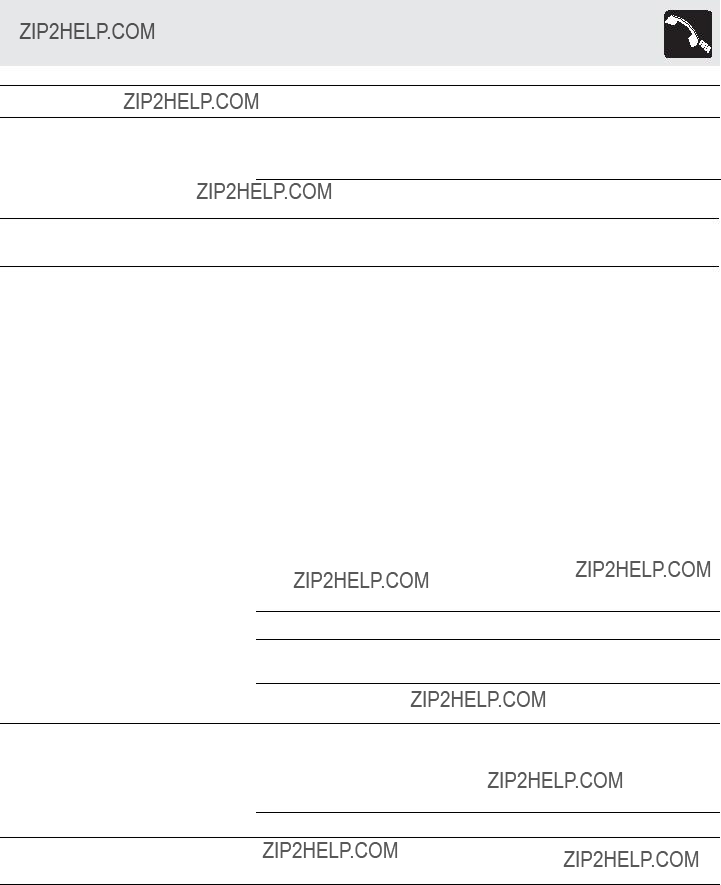
Before you call
Solutions to Common Problems
Entire oven does not operate.
House fuse has blown or circuit breaker has tripped immediately following installation. House fuse may not be fully engaged. Check fuse and screw or engage circuit breaker securely.
House fuse has blown or circuit breaker has tripped after the oven has been installed and previously operating. Call an authorized servicer.
Oven light does not work.
Make sure the oven door is close.
Controls not set properly. Follow instructions.
On a dual cavity model, one oven is in operation. If one oven is set for any mode, the second oven cannot be set to CLEAN.
Soil not completely removed after self- cleaning cycle is completed.
Failure to clean bottom, from top of oven, frame of oven or door area outside oven seal. These areas are not in the
Excessive spillovers in oven. Set the
Flames inside oven or smoke from vent.
Excessive spillovers in oven. This is normal, especially for high oven temperatures, pie spillovers or for large amounts of grease on bottom of oven. Wipe up excessive spillovers.
15

Major Appliance Warranty Information
Your appliance is covered by a one year limited warranty. For one year from your original date of purchase, Electrolux will pay all costs for repairing or replacing any parts of this appliance that prove to be defective in materials or workmanship when such appliance is installed, used and maintained in accordance with the provided instructions.
DISCLAIMER OF IMPLIED WARRANTIES; LIMITATION OF REMEDIES
CUSTOMER???S SOLE AND EXCLUSIVE REMEDY UNDER THIS LIMITED WARRANTY SHALL BE PRODUCT
REPAIR OR REPLACEMENT AS PROVIDED HEREIN. CLAIMS BASED ON IMPLIED WARRANTIES,
INCLUDING WARRANTIES OF MERCHANTABILITY OR FITNESS FOR A PARTICULAR PURPOSE, ARE
LIMITED TO ONE YEAR OR THE SHORTEST PERIOD ALLOWED BY LAW, BUT NOT LESS THAN ONE
YEAR. ELECTROLUX SHALL NOT BE LIABLE FOR CONSEQUENTIAL OR INCIDENTAL DAMAGES SUCH
AS PROPERTY DAMAGE AND INCIDENTAL EXPENSES RESULTING FROM ANY BREACH OF THIS
WRITTEN LIMITED WARRANTY OR ANY IMPLIED WARRANTY. SOME STATES AND PROVINCES DO NOT
ALLOW THE EXCLUSION OR LIMITATION OF INCIDENTAL OR CONSEQUENTIAL DAMAGES, OR
LIMITATIONS ON THE DURATION OF IMPLIED WARRANTIES, SO THESE LIMITATIONS OR EXCLUSIONS
MAY NOT APPLY TO YOU. THIS WRITTEN WARRANTY GIVES YOU SPECIFIC LEGAL RIGHTS. YOU MAY
ALSO HAVE OTHER RIGHTS THAT VARY FROM STATE TO STATE.
If You Need Keep your receipt, delivery slip, or some other appropriate payment record to establish the warranty period Service should service be required. If service is performed, it is in your best interest to obtain and keep all receipts.
Service under this warranty must be obtained by contacting Electrolux at the addresses or phone numbers below.
This warranty only applies in the USA and Canada. In the USA, your appliance is warranted by Electrolux Major Appliances North America, a division of Electrolux Home Products, Inc. In Canada, your appliance is warranted by Electrolux Canada Corp. Electrolux authorizes no person to change or add to any obligations under this warranty. Obligations for service and parts under this warranty must be performed by Electrolux or an authorized service company. Product features or specifications as described or illustrated are subject to change without notice.